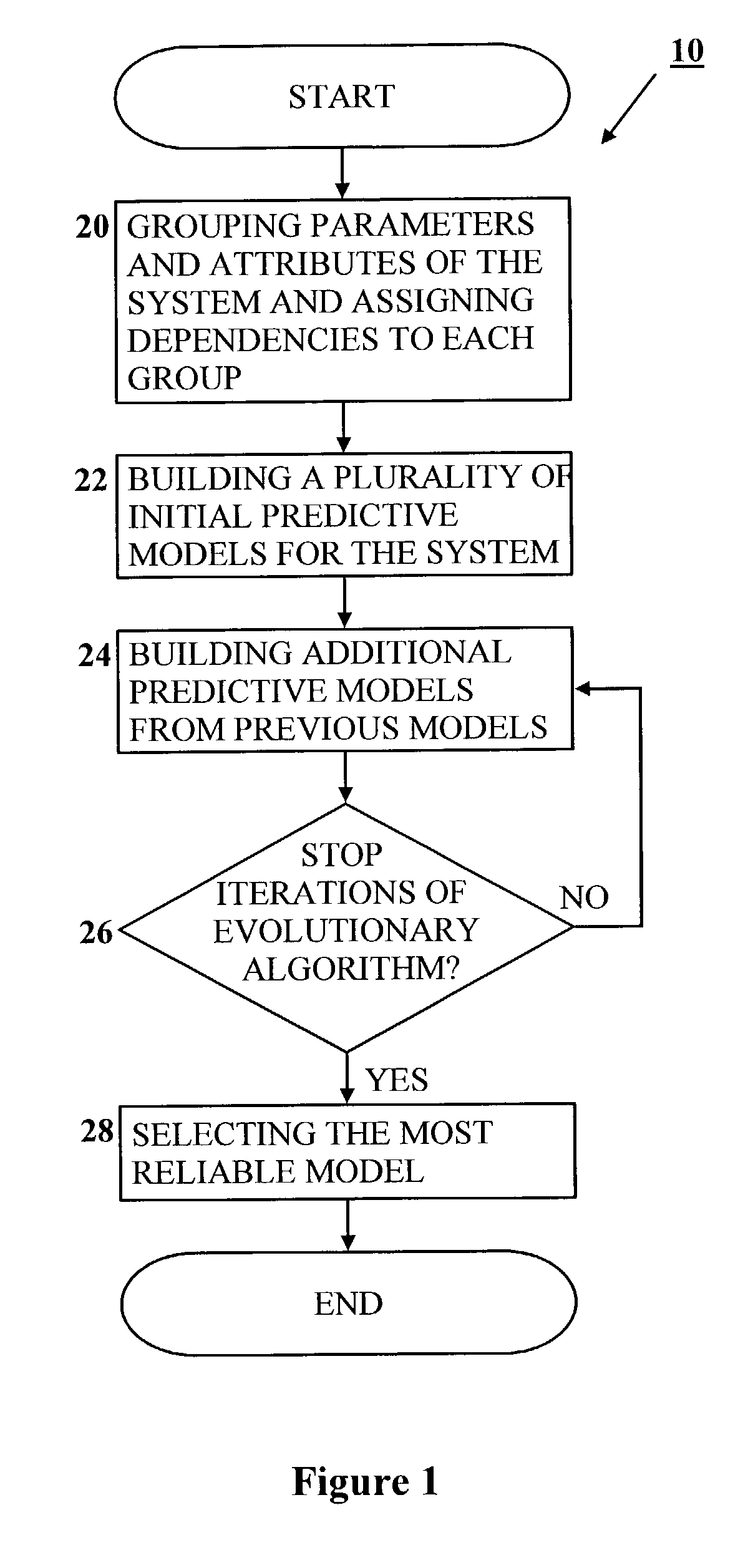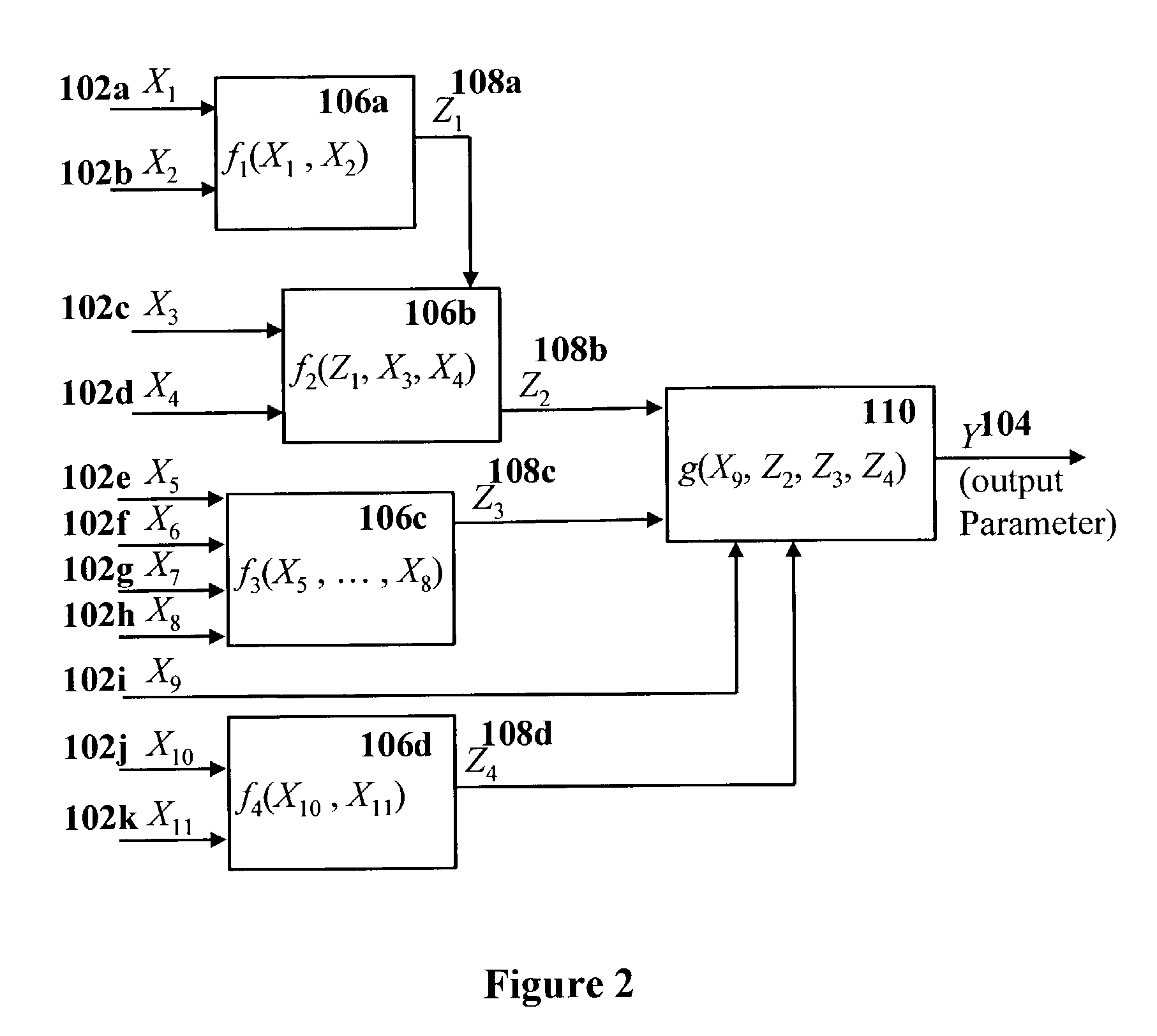Method and apparatus for knowledge-driven data mining used for predictions
a technology of knowledge-driven data and methods, applied in the field of knowledge-driven data mining methods and apparatuses used for predictions, can solve the problems of increasing the complexity of analysis, degrading accuracy, and not being useful,
- Summary
- Abstract
- Description
- Claims
- Application Information
AI Technical Summary
Benefits of technology
Problems solved by technology
Method used
Image
Examples
Embodiment Construction
[0056] The present invention is of a data-mining method that can be used to construct a predictive model that is in compliance with an expert's knowledge about the system at hand.
[0057] Specifically, the present invention can be used to construct a predictive model when there is a large corpus of data collected from past activity of the system or past events in the system (a historical database), the data comprised of a multitude of parameters. The present invention utilizes expert's description of qualitative dependencies between parameters, and it is especially useful when some or all of these dependencies rely on unmeasured or immeasurable attributes.
[0058] The principles and operation of a method and an apparatus for constructing predictive models according to the present invention may be better understood with reference to the drawings and accompanying descriptions.
[0059] Before explaining at least one embodiment of the invention in detail, it is to be understood that the inven...
PUM
 Login to View More
Login to View More Abstract
Description
Claims
Application Information
 Login to View More
Login to View More - R&D
- Intellectual Property
- Life Sciences
- Materials
- Tech Scout
- Unparalleled Data Quality
- Higher Quality Content
- 60% Fewer Hallucinations
Browse by: Latest US Patents, China's latest patents, Technical Efficacy Thesaurus, Application Domain, Technology Topic, Popular Technical Reports.
© 2025 PatSnap. All rights reserved.Legal|Privacy policy|Modern Slavery Act Transparency Statement|Sitemap|About US| Contact US: help@patsnap.com



